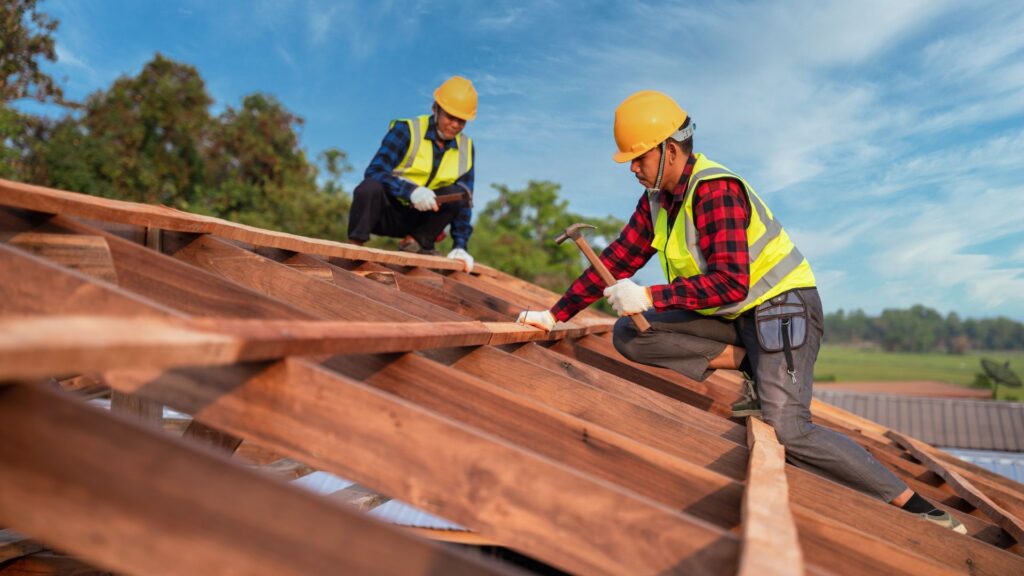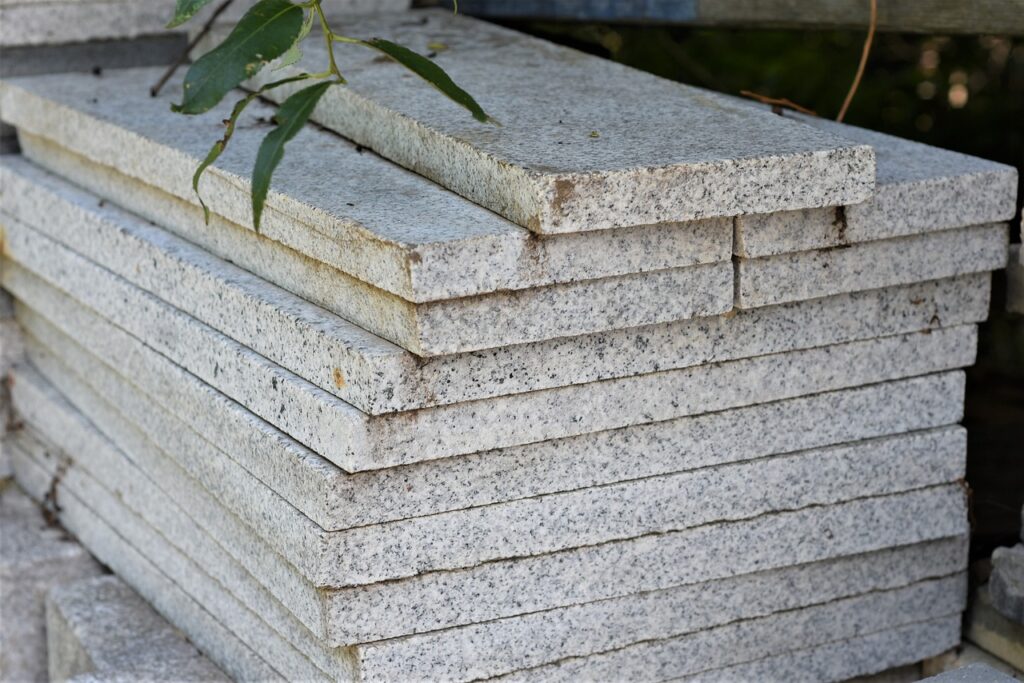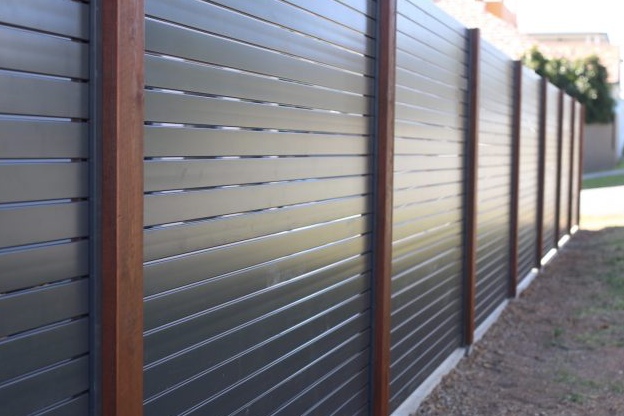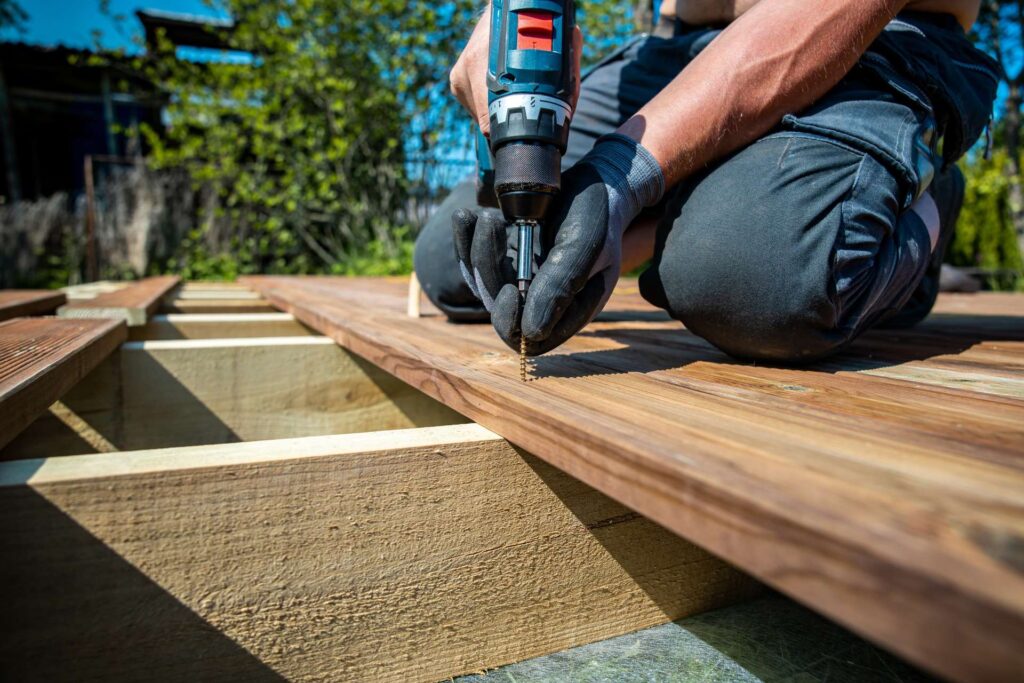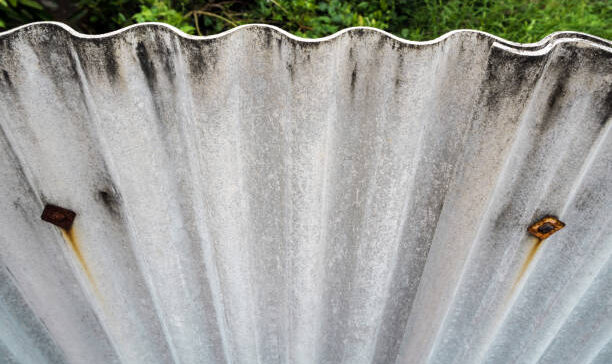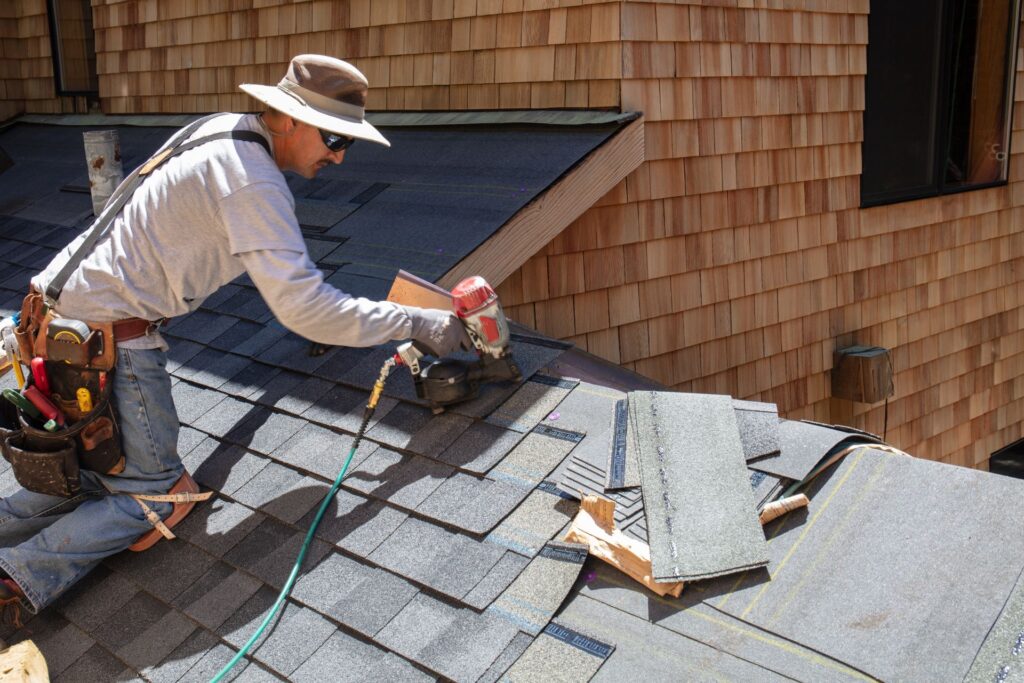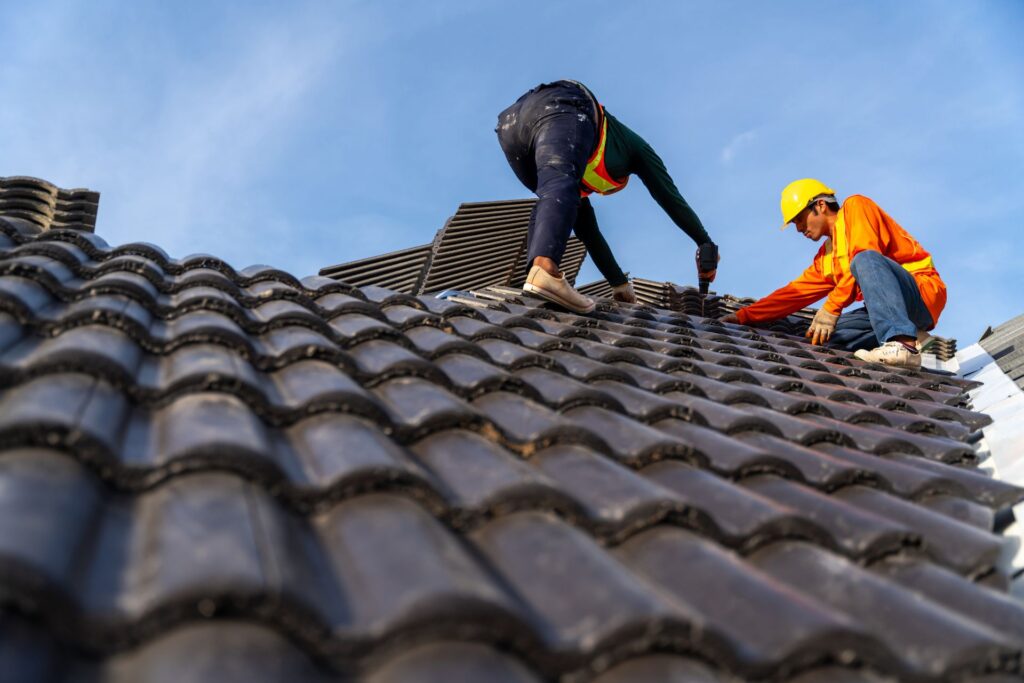Welcome to our comprehensive guide on roof rebuilding costs. If you’ve been wondering how much it would cost to rebuild a roof, you’re not alone. Whether it’s due to storm damage, wear and tear over the years, or simply needing a full upgrade, understanding the potential costs involved is essential to planning your project. In this post, we’ll break down everything you need to know about the factors that affect roof rebuilding expenses, from material choices and labor rates to hidden fees and cost-saving tips, helping you make an informed decision before tackling such a significant investment.
On average, the cost to rebuild a roof ranges from $5,000 to $15,000, depending on factors like roof size, material type, labor rates, and the extent of structural repairs needed. Common materials like asphalt shingles are more affordable, while options like metal or slate roofing can increase the overall price.
- Why Would You Need To Rebuild A Roof?
- Factors Influencing The Cost Of Rebuilding A Roof
- Cost Breakdown Of A Typical Roof Rebuild
- DIY Roof Rebuild Vs. Hiring A Professional
- How To Budget For A Roof Rebuild
- Tips To Save On Roof Rebuilding Costs
- What To Expect During The Roof Rebuilding Process
- FAQs: About How Much Does It Cost To Rebuild A Roof
- Conclusion
- Find A Professional Roofing Company Near You!
Why Would You Need To Rebuild A Roof?
A roof is a vital component of any building, serving as the first line of defense against environmental factors like weather, debris, and other external conditions. Over time, roofs endure significant wear and tear, which may eventually lead to the need for a full rebuild. But what exactly triggers this need? Let’s dive into the common signs of roof damage and explore why sometimes, repairs simply aren’t enough.
Signs of Roof Damage
Several issues can arise that signal the need to rebuild a roof. Here are the most frequent reasons:
1. Severe Weather Damage: One of the most common causes of roof damage is severe weather. Heavy storms, high winds, hail, and even extreme temperatures can deteriorate a roof’s integrity. High winds can rip off shingles, hail can cause punctures, and ice buildup can create pressure, leading to cracks or leaks. When the damage from weather is significant, a repair might not be sufficient to restore the roof’s original condition, making a rebuild necessary.
2. Age of the Roof: Roofs don’t last forever. Most roofs, depending on the material, have a lifespan ranging from 20 to 50 years. Over time, even the best-maintained roof will begin to show signs of aging, such as curling shingles, granule loss, and fading. An aging roof may develop small leaks or weak spots, and while repairs can help, there comes a point when patching up becomes less cost-effective than replacing the entire structure.
3. Structural Issues: Over time, the roof’s structure may weaken due to several factors, such as water damage or poor installation. A sagging roofline or visible dips are telltale signs of structural problems. If left unattended, this can lead to safety hazards, including potential collapse. In these cases, a roof rebuild becomes crucial to prevent further deterioration and to ensure the safety of the building and its inhabitants.
4. Poor Materials or Installation: Sometimes, the problem lies in the materials used or the way the roof was initially installed. If substandard materials were used, or if the roof was poorly constructed, issues can arise far sooner than expected. This includes improper sealing, inadequate ventilation, or insufficient insulation, all of which can lead to accelerated wear and tear. In such cases, rebuilding the roof with better materials and proper techniques is often the only viable long-term solution.
When Roof Repair Isn’t Enough
There are instances when a simple repair might seem like a quick fix, but it won’t address the underlying issues. Below are common situations where a roof rebuild becomes necessary:
1. Long-Term Leaks: Small leaks can often be repaired without too much trouble. However, if the leaks have been happening for a long time, they can cause widespread damage to the roof deck, insulation, and even the walls and foundation of your home. Extensive water damage may require tearing down the roof and rebuilding it to ensure the structural integrity of your home.
2. Sagging Roofline: If you notice that your roof is sagging or has visible dips, this is a serious issue. Sagging can be caused by water damage, structural problems, or even the weight of multiple layers of roofing materials if previous repairs were done without removing old layers. A sagging roof is more than an aesthetic issue it indicates a compromised structure that cannot be fixed with repairs alone. A full rebuild will restore the roof’s structural integrity.
3. Extensive Damage to the Roof’s Structure: When the damage extends beyond the shingles and into the roof’s underlying structure, a repair might not be enough. If the deck, rafters, or trusses are damaged, the roof may not be able to support its own weight or keep water out effectively. Rebuilding the roof allows contractors to assess and replace damaged components, ensuring a safe and durable solution.
In summary, while repairs can extend the life of your roof, there are times when rebuilding is the only option to guarantee safety and long-term durability. Whether due to severe weather, aging, or structural issues, knowing when to rebuild your roof can save you from more costly problems down the road.

Factors Influencing The Cost Of Rebuilding A Roof
When planning to rebuild or replace a roof, several important factors contribute to the overall cost. Understanding these variables can help you make informed decisions, budget effectively, and ensure the longevity of your investment. Below, we dive into the key elements that influence the cost of rebuilding a roof.
Size and Pitch of the Roof
One of the most significant factors that affect roofing costs is the size and pitch (steepness) of the roof. The larger the roof, the more materials you will need, and the longer it will take to install. Roofers typically measure roofing areas in “squares,” where one square equals 100 square feet. A bigger roof means more labor hours and increased material costs.
Additionally, the pitch of the roof plays a critical role. A steep roof requires more safety precautions, specialized equipment, and additional time for installation, all of which can raise labor costs. Flatter roofs, on the other hand, are easier to work on and generally less expensive in terms of labor.
Material Choices
The type of roofing material you choose can significantly impact both the upfront cost and the long-term value of your roof. Different materials vary in price, durability, and aesthetic appeal, making it essential to understand the pros and cons of each option:
- Asphalt Shingles: By far the most common and cost-effective roofing material. Asphalt shingles are easy to install, relatively affordable, and come in various colors and styles. However, they may not last as long as other materials and could require more frequent replacements.
- Metal Roofing: Metal roofing has gained popularity due to its durability and energy efficiency. It’s more expensive upfront compared to asphalt shingles, but metal roofs often last longer and require less maintenance. They are also more resistant to extreme weather conditions, such as high winds or heavy snow.
- Tile or Slate Roofing: These are premium options, offering incredible longevity and aesthetic value. Tile or slate roofs can last over 100 years but come with a significantly higher price tag. They are heavy and may require additional structural support, further increasing costs.
- Other Options: Cedar shakes, synthetic materials, and even solar shingles are available for those looking for something unique. Each option comes with its own price point and performance benefits, allowing you to choose what best fits your needs and budget.
Location and Local Pricing Variations
Roofing costs can vary dramatically based on your geographic location. Factors like local labor rates, the availability of materials, and regional demand all influence prices. For instance, roofing might cost more in urban areas due to higher labor costs, while in rural locations, the availability of materials could drive up expenses. It’s important to consult with local contractors to get an accurate estimate based on the specific conditions in your area.
Labor Costs
Labor costs make up a significant portion of roofing expenses. The experience level of the contractor, their crew, and the complexity of the roof design will all affect the final price. A well-established contractor with a proven track record may charge more, but their expertise could save you money in the long run by ensuring a higher-quality installation. Additionally, certain materials like tile or slate require specialized skills, which can increase labor costs.
Structural Repairs
Often, hidden damage to the roof’s structure is only discovered after the old roofing material has been removed. If the underlying trusses or rafters are damaged or decayed, they will need to be repaired or replaced before the new roof can be installed. This can lead to unexpected additional costs, but it’s crucial to address these issues to avoid future problems.
Waste Removal and Cleanup
Replacing a roof generates a lot of waste, including old shingles, nails, and other debris. Proper disposal is essential, and most contractors will include waste removal as part of their estimate. However, in some cases, you may need to factor in the cost of renting a dumpster or paying for additional cleanup services. Be sure to clarify this with your contractor ahead of time to avoid surprises later on.
Rebuilding a roof is a significant investment that goes beyond just materials and labor. By understanding the factors influencing the cost such as the size and pitch of your roof, the material choices available, location-based pricing, and potential structural repairs you can better prepare for the expenses involved. Additionally, choosing a reputable contractor and planning for waste removal can ensure a smoother project from start to finish.
Taking the time to assess these factors will help you create a roofing solution that fits both your budget and long-term goals.

Cost Breakdown Of A Typical Roof Rebuild
When planning for a roof rebuild, it’s crucial to understand the different factors that affect the total cost. The overall expense is determined by several key components, including the materials used, the labor involved, additional fees, and potential savings. Here’s a detailed breakdown of the costs involved in a typical roof rebuild:
Average Costs by Material
The choice of roofing material plays a significant role in determining the overall cost of a roof rebuild. Here’s a general range of what you can expect from popular materials:
- Asphalt Shingles: $100 to $400 per square (a square covers 100 square feet). Asphalt shingles are the most common and affordable roofing material, known for their ease of installation and reasonable lifespan.
- Metal Roofing: $300 to $1,000 per square. Metal roofs are durable, energy-efficient, and resistant to harsh weather conditions, but they come at a higher initial cost.
- Wood Shingles or Shakes: $450 to $900 per square. Wooden shingles offer a rustic aesthetic but require more maintenance and can be more costly due to the material and installation complexity.
- Clay or Concrete Tiles: $600 to $1,800 per square. Clay and concrete tiles are heavy but highly durable, offering longevity that can outlast many other materials.
- Slate: $1,200 to $3,000 per square. Slate roofs are among the most expensive but provide unmatched durability, often lasting over a century.
It’s important to note that these ranges can vary based on location, roof size, and other factors like customization.
Labor Costs
Labor makes up a significant portion of the overall roof rebuild costs. Labor pricing can be affected by the complexity of the roof, the type of material being installed, and regional labor rates. Generally, you can expect labor costs to fall within the following ranges:
- Hourly Rate: Skilled roofing labor typically ranges between $40 to $80 per hour.
- Per-Square-Foot Rate: Alternatively, many contractors may charge $1.50 to $3.50 per square foot for labor. Complex roof designs, such as steep pitches or multiple roof facets, can increase the labor cost.
Always ensure that your contractor provides a detailed estimate, including labor, before starting any roofing project.
Additional Expenses
Beyond material and labor, several other expenses could impact the total cost of a roof rebuild:
- Permit Fees: In many regions, a building permit is required to replace or rebuild a roof. Permit costs typically range from $150 to $500, depending on your local regulations. These fees ensure that the project complies with local building codes and standards.
- Warranty Costs: Extended warranties or premium-grade materials often come with additional fees. For example, upgrading to a high-end material or adding a comprehensive warranty can increase the overall cost by 10-20%, depending on the terms.
Potential Cost Savings
Despite the potentially high cost of a roof rebuild, there are ways to save money through various incentives and energy-efficient upgrades:
- Tax Credits and Rebates: Many states offer tax credits, rebates, or financial incentives for installing energy-efficient roofing materials. Metal roofs or solar roofing options, for instance, can qualify for tax incentives due to their energy-saving properties. These incentives can significantly reduce your overall costs.
- Insurance Discounts: Certain roofing materials, like impact-resistant shingles or metal, may qualify for insurance discounts. Since these materials are more resistant to damage, your home insurance provider might offer lower premiums as a result.
- Energy Savings: Opting for energy-efficient materials like metal roofs or installing proper insulation during the rebuild can result in long-term savings on utility bills. Reflective materials reduce heat absorption, lowering the strain on your HVAC system and cutting energy costs over time.
Understanding the cost breakdown of a typical roof rebuild allows homeowners to budget effectively and make informed decisions about materials and contractors. While initial costs might seem high, choosing energy-efficient and durable materials can offer substantial savings over time through rebates, tax credits, and reduced maintenance. Always consult with a professional roofing contractor to get an accurate estimate tailored to your specific needs and location.

DIY Roof Rebuild Vs. Hiring A Professional
When faced with a roof that needs rebuilding, many homeowners might wonder if it’s a job they can tackle themselves or if hiring a professional is the smarter choice. Let’s break down the pros and cons of each option so you can make the most informed decision for your home.
DIY Considerations
Tackling a roof rebuild on your own can be tempting, especially if you’re handy and want to save on labor costs. However, before grabbing a ladder and a toolbox, it’s crucial to consider the challenges involved. Roofing isn’t just about replacing shingles; it’s a complex process that demands specific skills and knowledge of structural integrity, proper ventilation, and weatherproofing techniques. Without experience, you could be setting yourself up for long-term issues such as leaks, poor insulation, or even structural damage.
Safety is also a top concern. Roofing is a physically demanding job that involves working at heights, often in unpredictable weather conditions. One misstep could result in serious injury. Professional roofers have years of experience navigating these dangers and are equipped with the right safety gear to avoid accidents. In contrast, homeowners might not have the same level of safety awareness or equipment, making DIY roofing a potentially hazardous endeavor.
Furthermore, you’ll need specialized tools to get the job done correctly, from nail guns to roof jacks. While these tools can be rented, knowing how to use them properly is another challenge altogether. If you’re inexperienced, you risk making costly mistakes that can lead to bigger repairs down the road.
Why Hiring a Pro Is Often Better
Hiring a professional roofing contractor brings a level of expertise that simply can’t be matched by a DIY approach. A licensed roofer has been trained in all aspects of roofing, from the initial tear-off to the final inspection. They know how to spot underlying issues that may not be visible to the untrained eye, such as rot, mold, or structural damage. By addressing these problems upfront, professionals can prevent costly repairs in the future.
Moreover, professionals work with efficiency. What could take a homeowner weeks or even months to complete, a professional roofing team can finish in just a few days. They also bring access to better-quality materials at discounted rates, which often results in a more durable and long-lasting roof.
Perhaps one of the biggest advantages of hiring a professional is the warranty. Most reputable roofers offer warranties on both materials and labor, providing peace of mind that if something goes wrong, you’re covered. A DIY job, on the other hand, offers no such guarantee, leaving you responsible for any future repairs or issues.
Cost Comparison
When it comes to cost, many homeowners are drawn to the idea of saving money with a DIY project. While it’s true that handling the labor yourself can cut down on upfront expenses, it’s essential to consider the bigger picture. The material costs for a DIY roof rebuild can range from a few thousand dollars, depending on the size of the roof and the materials you choose. However, any mistakes made during the installation can lead to additional costs down the line whether it’s replacing sections of the roof, fixing leaks, or dealing with structural damage.
On the other hand, hiring a professional may cost more upfront, primarily due to labor fees. For a typical roof rebuild, labor alone can account for a significant portion of the final bill. However, this higher initial cost often pays off in the long run. Professional work tends to last longer, is less likely to encounter issues, and comes with the added benefit of warranties. In many cases, a professionally installed roof will save you money by reducing future repair and maintenance costs.
In conclusion, while a DIY roof rebuild might seem like a good way to save money at first glance, the risks, challenges, and potential for costly mistakes make it a daunting task for most homeowners. Hiring a professional not only ensures a safer, higher-quality job but also gives you the peace of mind that your roof will stand the test of time.

How To Budget For A Roof Rebuild
Planning a roof rebuild can seem like a daunting task, but creating a well-thought-out budget can make the process smoother. This section will guide you through estimating costs, preparing for surprises, exploring financing options, and understanding potential insurance coverage.
Estimate Total Costs
To budget effectively for a roof rebuild, it’s essential to have a clear estimate of the total costs involved. Start by considering the primary expenses:
- Material Costs: The type of roofing material you choose whether asphalt shingles, metal, or tile will have a significant impact on your budget. Research prices for each material and factor in the cost per square foot. For example, asphalt shingles tend to be more affordable, while metal roofing offers longevity but comes with a higher price tag.
- Labor Costs: Labor expenses will vary depending on the complexity of the job and your location. Contact several roofing contractors to get detailed quotes. Make sure to request a breakdown of labor costs, as this can help you compare prices more effectively.
- Additional Expenses: Don’t forget to include the costs of any necessary permits, disposal fees for removing old roofing materials, and any additional work such as replacing insulation or repairing gutters.
Once you’ve gathered information on materials, labor, and miscellaneous expenses, add them together to get an overall estimate. It’s always wise to round up slightly to account for any minor price changes during the project.
Plan for Contingencies
No matter how well you plan, unexpected expenses can arise during a roof rebuild. Hidden issues, such as water damage, structural weaknesses, or deteriorating insulation, often aren’t visible until the old roof is removed. These types of problems can quickly drive up costs.
To avoid financial surprises, build a contingency fund into your budget. A good rule of thumb is to set aside an additional 10-15% of your total estimated costs. This cushion will give you peace of mind, knowing you’re prepared for the unexpected.
Explore Financing Options
A roof rebuild can be a significant investment, but there are several financing options available to help manage the cost:
- Personal Loans: If you have good credit, a personal loan could provide the funds needed to cover the roof rebuild. These loans typically offer fixed interest rates and predictable monthly payments, making it easier to plan your budget.
- Home Equity Loans: If you’ve built up equity in your home, you might consider a home equity loan or home equity line of credit (HELOC). These options often come with lower interest rates compared to personal loans, though they require using your home as collateral.
- Roofing Company Financing: Many roofing companies offer financing plans for homeowners. These can be a convenient option, especially if you’re working directly with the contractor for the rebuild. Be sure to carefully review the terms and interest rates before committing.
Evaluate your financial situation to choose the best option for your needs. It’s also worth considering pre-qualification for a loan so you have a clear understanding of what you can afford before starting the project.
Understand Insurance Coverage
In some cases, your homeowner’s insurance policy may cover part or all of the roof rebuild, depending on the circumstances. If your roof was damaged by a storm, fallen tree, or other insured events, you could be eligible for compensation.
Before starting any work, contact your insurance company to discuss your policy and file a claim if applicable. It’s essential to understand the terms of your coverage, including any deductibles or exclusions that may apply. Keep thorough records of all inspections, estimates, and communication with your insurance provider to ensure a smooth claims process.
By understanding these key elements total cost estimation, contingency planning, financing options, and potential insurance coverage you can budget effectively for your roof rebuild and minimize financial stress. With the right preparation, you’ll be on track to complete your project efficiently and within your means.

Tips To Save On Roof Rebuilding Costs
Rebuilding a roof is a significant investment, but there are several strategies you can employ to keep costs manageable without sacrificing quality. Here are some practical tips to help you save on your roof-rebuilding project:
Off-Season Deals
One of the best ways to reduce the cost of a roof rebuild is to plan the project during the off-season. Roofing contractors are often busiest during the warmer months, especially in spring and summer, when homeowners are preparing for harsh weather or dealing with winter-related damage. However, during the slower seasons typically late fall and winter you may find that contractors are more willing to offer discounts or lower quotes. By scheduling your roof rebuild during this off-peak period, you could negotiate a better rate, as contractors often seek additional work to keep their crews busy.
Material Alternatives
When it comes to roofing, the material you choose plays a significant role in determining the overall cost. While premium materials like slate or metal can be more durable and visually appealing, they often come with higher price tags. To save money, consider opting for mid-range materials such as asphalt shingles, which offer a good balance between cost and longevity. Comparing different roofing materials based on factors like durability, energy efficiency, and maintenance requirements will help you make an informed decision that fits your budget while still providing the protection your home needs.
Long-Term Investment
Although it may be tempting to choose the cheapest materials or contractor, it’s important to think of your roof as a long-term investment. High-quality materials, while more expensive upfront, can save you money in the long run by lasting longer and requiring fewer repairs. Investing in durable materials can prevent the need for premature replacements, meaning you won’t have to pay for another roof rebuild anytime soon. Additionally, better-quality roofing materials can improve energy efficiency, potentially lowering your heating and cooling costs over time. By viewing your roof rebuild as a long-term investment, you may find that spending a bit more initially pays off with lower maintenance costs and improved home value down the road.
In conclusion, being strategic about when you schedule your roof rebuild, carefully considering your material choices, and thinking of your roof as a long-term investment can all help reduce your overall expenses. Balancing immediate costs with future savings will ensure you get the best value for your money while keeping your home protected for years to come.

What To Expect During The Roof Rebuilding Process
When it comes to rebuilding your roof, understanding the entire process can help ease any concerns and allow you to plan effectively. Here’s a step-by-step breakdown of what you can expect during the roof rebuilding process, ensuring you’re fully informed from start to finish.
Step-by-Step Process for Roof Rebuilding
1. Inspection and Estimate
The first stage in rebuilding your roof is a thorough inspection. A professional roofing contractor will visit your home to assess the condition of the current roof. This inspection will involve checking for damage, leaks, and any underlying structural issues that may need to be addressed. Following this, the contractor will provide you with a detailed estimate. This estimate will outline the costs of materials, labor, and any potential extras, giving you a clear picture of what to expect in terms of budget and timeline.
2. Permitting and Preparation
Once you’ve agreed on the estimate and chosen your contractor, the next step is obtaining the necessary permits. This can take a bit of time, depending on your local municipality’s regulations, but it’s a crucial part of the process. Your contractor will typically handle this step, ensuring all legal requirements are met before any work begins. During this phase, the contractor will also prepare the site, which may include ordering materials, scheduling work crews, and setting up any necessary equipment.
3. Old Roof Removal
Before any rebuilding can occur, the old roof needs to be removed. The roofing crew will begin by tearing off the existing roof, including shingles, underlayment, and any other materials that have degraded over time. This is often the messiest part of the job, but reputable contractors will take care to minimize disruption to your home. They will properly dispose of all old materials, ensuring everything is cleaned up before moving on to the next phase.
4. Roof Repair/Rebuild
With the old roof removed, the rebuilding process can begin. This step may involve structural repairs if any damage to the underlying roof decking or supports was discovered during the inspection. Once any necessary repairs are completed, the contractor will start installing the new roof. This typically involves placing new underlayment, followed by the selected roofing material whether it’s shingles, tiles, or metal panels. Each layer is carefully installed to ensure maximum protection and durability for years to come.
5. Final Inspection
Once the new roof is installed, your contractor will perform a final inspection to ensure everything is up to code and meets the agreed-upon specifications. They’ll check the overall workmanship, ensuring that every part of the roof is securely in place and that no areas have been overlooked. After the inspection, the contractor will clean up the site, removing any remaining debris and ensuring your property is left in pristine condition. You’ll be left with a brand-new, high-quality roof that not only looks great but will protect your home for years to come.
Rebuilding a roof may seem like a daunting task, but when you understand the process, it becomes much more manageable. From the initial inspection and estimate to the final inspection and clean-up, a reputable contractor will guide you through each step with professionalism and care. By knowing what to expect during the roof rebuilding process, you can approach your project with confidence, ensuring that your home gets the protection and aesthetic appeal it deserves.

FAQs: About How Much Does It Cost To Rebuild A Roof
Conclusion
Understanding the key factors that influence roof rebuilding costs such as materials, labor, roof size, and potential permits can help homeowners better plan for this significant investment. Proper planning not only ensures that you stay within budget but also that the quality of the work meets your needs. If you suspect your roof may require rebuilding, now is the perfect time to assess its condition and consider getting professional quotes. Taking action early can prevent further damage and unexpected expenses. Reach out to a qualified roofing professional for an accurate estimate and personalized consultation to ensure your home remains safe and well-maintained.
Find A Professional Roofing Company Near You!
- Auckland Roofing Company
- Cambridge Roofing NZ
- Central Otago Roofing Services
- Hamilton Roofing Services
- Hastings Roofing Company
- Hawkes Bay Roofing Company
- Kapiti Coast Roofing Services
- Lower Hutt Roofing Services
- Napier Roofing Company
- New Plymouth Roofing Company Taranaki
- North Shore Roofing Company
- Orewa Roofing Company
- Porirua Roofing Services
- Roof Painting Company Auckland
- Roof Repairs Manukau
- Roof Repairs Takanini
- Roofers Papakura
- Roofing Company Auckland
- Roofing Company Invercargill
- Roofing Contractors Northland
- Roofing Contractors South Auckland
- Roofing Contractors Whangarei
- Roofing Palmerston North
- Roofing Waikato
- Roofing Walkworth
- Roofing Wellington
- Te Awamutu Roofing
- Upper Hutt Roofing Services
- Warkworth Roofing Company
About the Author:
Mike Veail is a recognized digital marketing expert with over 6 years of experience in helping tradespeople and small businesses thrive online. A former quantity surveyor, Mike combines deep industry knowledge with hands-on expertise in SEO and Google Ads. His marketing strategies are tailored to the specific needs of the trades sector, helping businesses increase visibility and generate more leads through proven, ethical methods.
Mike has successfully partnered with numerous companies, establishing a track record of delivering measurable results. His work has been featured across various platforms that showcase his expertise in lead generation and online marketing for the trades sector.
Learn more about Mike's experience and services at https://theleadguy.online or follow him on social media:

